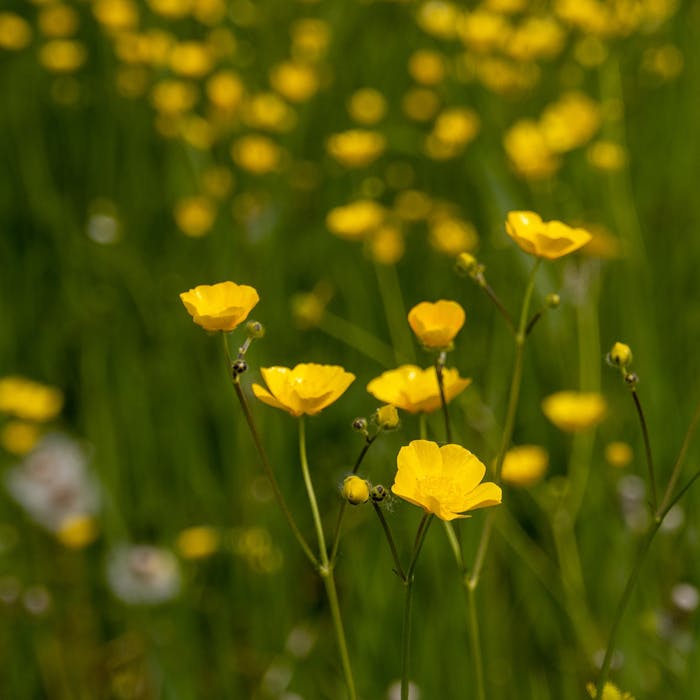
The meadow buttercup - a pastoral pleasure
The word buttercup is likely to conjure up images of perfect sunny summer leisure days, due to the vibrant sunlike colour of the flowers, and its preference for lush well-watered grassland and meadows that are perfect for picnics.
The meadow buttercup is a widespread and common perennial in meadows and pastures, also found in parks, gardens and at woodland edges.
Buttercups get their bright colour from yellow pigments in the petals’ surface layer, and their shiny gloss is thanks to layers of air just beneath the surface reflecting the light like mirrors. This glowing phenomenon is a feature of plants, although something similar happens with some butterfly and bird wings.
The yellow flowers are about 2cm across, with five, shiny petals. The Meadow Buttercup plant - scientific name: ranunculus acris - has rounded leaves, divided into three to seven lobes, and does not possess the runners of that invasive bane of gardeners, the Creeping Buttercup.
Flowering between April and October, it prefers slightly damper sites, with chalky or lime soil, where it can grow so densely that it can form intense yellow meadows that dazzle in the sunshine. The Meadow Buttercup remains common throughout the UK.
The origin of the name appears to come from a belief that the plant gave butter its golden hue. In reality buttercups are poisonous to grazing cattle and are generally left uneaten, though their toxins disappear in dried hay.
Buttercups are frequently featured in medieval church carvings. They can be seen, for instance, in Bristol Cathedral and carved on the capitals of Southwell Minster Chapter House in Nottinghamshire.
A common playground myth is that if you place a buttercup under someone’s chin you can tell if they like butter or not, and if they like butter you can see yellow under that person’s chin.
Further reading
Links to external websites are not maintained by Bite Sized Britain. They are provided to give users access to additional information. Bite Sized Britain is not responsible for the content of these external websites.
